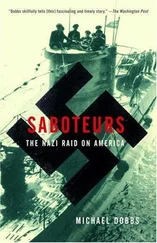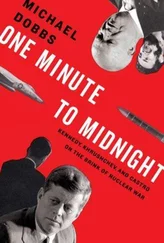When Dyatlov inspected the damaged reactor, he discovered that two entire walls of the building were missing. By this time he was feeling nauseated, having exposed his body to destructive beta and gamma rays. He grabbed some computer printouts and took them to the administrative building, where the plant director, Viktor Bryukhanov, was on the phone to Moscow. The director was insisting that the reactor was intact and the fire under control. Dyatlov was too sick to argue with his boss. He felt as if there were nothing left of his insides. He mumbled something about a fault in the shutdown mechanism and left the room. He spent the rest of the night throwing up, alongside his companions from the control room.
A turbine engineer by profession, Bryukhanov knew little about nuclear power. His real skill lay in knowing how to please the bosses, while making sure that his subordinates received their annual bonuses for “fulfilling the plan.” Ever since his appointment as the first director of the Chernobyl plant in 1970, at the remarkably young age of thirty-five, he had been under constant pressure to meet plan targets. He had pushed ahead with the construction of new reactors, ignoring warnings about sloppy building practices and violations of safety procedures. Four years earlier a small explosion had occurred in the core of Reactor No. 1, releasing some radioactivity into the air. Bryukhanov’s main concern then had been to hush up the incident and repair the damaged reactor as quickly as possible. The following year he had succeeded in commissioning the fourth unit three months ahead of schedule, an achievement that earned him the title Hero of Socialist Labor.
Anxious to salvage his reputation as an efficient manager, Bryukhanov reported that Reactor No. 4 was still functioning and radiation levels at the plant were “within normal limits.” He based this claim on the fact that the Geiger counters were incapable of registering more than one thousand microroentgens per second, a relatively modest amount. When a civil defense worker finally unearthed a much more powerful instrument and took measurements showing catastrophic levels of radiation, the director refused to believe him.
“There’s something wrong with your instrument. Fields that high are impossible,” he snapped. “Get that thing out of here, or toss it in the garbage.” 109
NUCLEAR ACCIDENTS CAN OCCUR anywhere, but Chernobyl was a uniquely Soviet catastrophe. It was the almost inevitable consequence of the rapacious attitude toward nature that was an inherent part of the Soviet system of economic development. In the revolutionary mind-set, nature was subordinate to man. “We cannot wait for favors from nature,” Soviet propagandists liked to proclaim. “Our task is to take them from her.” In the end nature was bound to take its revenge, one way or another.
“The Russian soil was able to support the Communists for fifty years. It can’t put up with them much longer,” said Adam Michnik, one of the intellectual forces behind the Polish Solidarity movement, referring to Chernobyl and a host of other man-made disasters. “In Poland, in August 1980, it was human beings who went on strike. In the Soviet Union we are witnessing a strike of inanimate objects.” 110
In the immediate aftermath of Chernobyl, the government blamed the disaster on Bryukhanov, Dyatlov, and their subordinates. It was true that they had ignored safety rules and made serious errors of judgment. The investigation showed that the operators had switched off the emergency cooling system to Reactor No. 4 so that it would not interfere with the turbine experiment. They had failed to observe proper shutdown procedures. At a secret trial in July 1987 both Dyatlov and Bryukhanov were sentenced to ten years’ imprisonment for “violations of discipline.” Four other operators received prison sentences ranging from two to ten years. The prosecution described the defendants as “nuclear hooligans.”
By producing a few scapegoats, the court neatly absolved everybody else of responsibility. The verdict deflected attention away from a series of major design flaws in the Chernobyl type of reactor, such as the lack of a containment structure to prevent leaks of radioactivity. It turned out that such reactors were chronically unstable at low levels of power, but no one had bothered to inform the operators about this defect. The operators were also unaware that under certain circumstances, the emergency shutdown mechanism could trigger a fatal surge of power. This is precisely what happened at Chernobyl. To have admitted all this at the time would have raised questions about the whole future of the nuclear power industry. It was much easier to blame “operator error.”
The real villain of Chernobyl was not the operators or even the designers of the flawed reactor, but the Soviet system itself. It was a system that valued conformity over individual responsibility, concerned with today rather than tomorrow, a system that treated both man and nature as “factors of production” that could be mercilessly exploited. Eventually something had to break.
The violation of safety procedures was the norm, rather than the exception, in Soviet factories. So too was the obsession with secrecy that deprived the operators of the Chernobyl plant of basic information about the design of the reactor and previous nuclear accidents. But perhaps the gravest shortcoming of the system was the way it suppressed the notion of individual responsibility. The physical bravery displayed by many of the six hundred thousand “liquidators” who took part in the Chernobyl cleanup efforts—beginning with the operators themselves and the firemen who fought the blaze on the roof of the turbine hall—was remarkable. Equally remarkable was the moral cowardice that caused otherwise decent individuals to go along with senseless and reprehensible decisions, including a fatal delay in the evacuation of hundreds of thousands of people from heavily contaminated areas. When the Ukrainian Communist Party chief insisted that May Day parades go ahead in Kiev despite the fact that radioactive winds were blowing in the direction of the capital, hardly anyone stood up to protest.
This moral failing was eventually recognized by one of the leaders of the Soviet nuclear industry, academician Valery Legasov, who committed suicide on the second anniversary of the disaster. Shortly before his death he gave an interview in which he complained that technology had been permitted to outpace morality. He explained that the previous generation of Soviet scientists—men like Sakharov, Kurchatov, and Kapitsa—had stood “on the shoulders of Tolstoy and Dostoevsky.” They had been educated in the spirit of beautiful literature, great art, and a “correct moral sense.” But somewhere along the line the connection with Russia’s prerevolutionary traditions had been broken. “Soviet man” was technically developed but morally stunted.
“We will not cope with anything if we do not renew our moral attitude to work,” Legasov concluded. 111
The Soviet system made a catastrophe like Chernobyl unavoidable. It then compounded the tragedy by an insistence on secrecy so absurd that it was ultimately self-defeating. The attempted cover-up was all the more grotesque because it came when the rest of the world was in the throes of an information revolution that rapidly revealed the magnitude of the disaster.
ONE OF THE FIRST DECISIONS taken by Bryukhanov in the early-morning hours of Saturday, April 26, was to order nonessential telephone lines around Chernobyl to be cut. 112It was an apparatchik’s instinctive reaction to a major disaster. To the Communist bureaucratic mind, there is nothing more frightening than loss of control. Panic could be avoided by keeping the population in the dark.
During those first few hours after the explosion, thousands of people living in the immediate vicinity of the power plant received potentially fatal doses of radiation. Unaware of the danger, people took advantage of the warm weather to tend their gardens, visit friends, and play outside with their children. Local officials later boasted that sixteen couples were married in Pripyat that day, proving how “normal” everything was less than two miles away from the burning reactor.
Читать дальше












